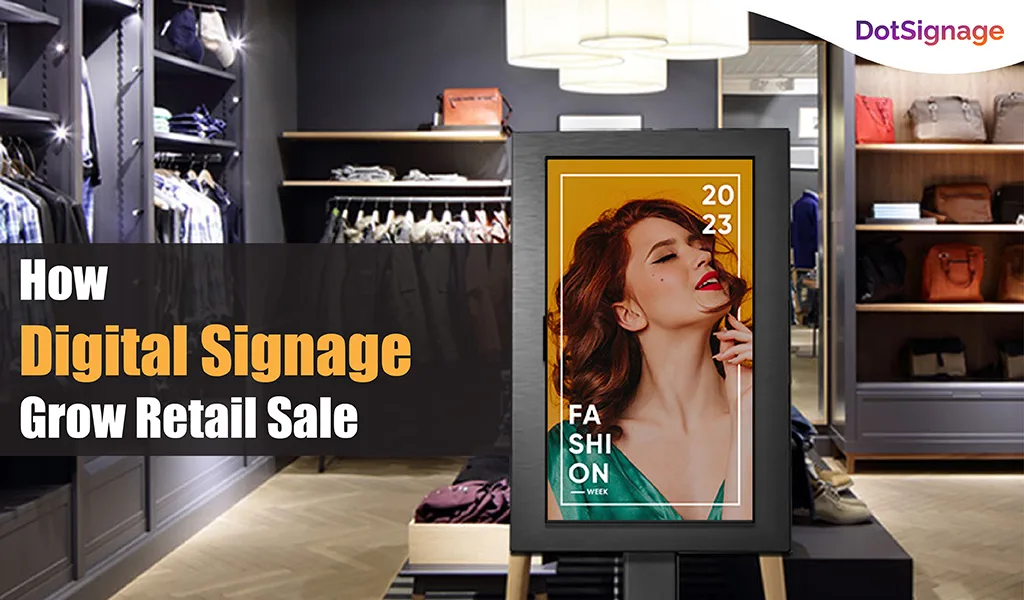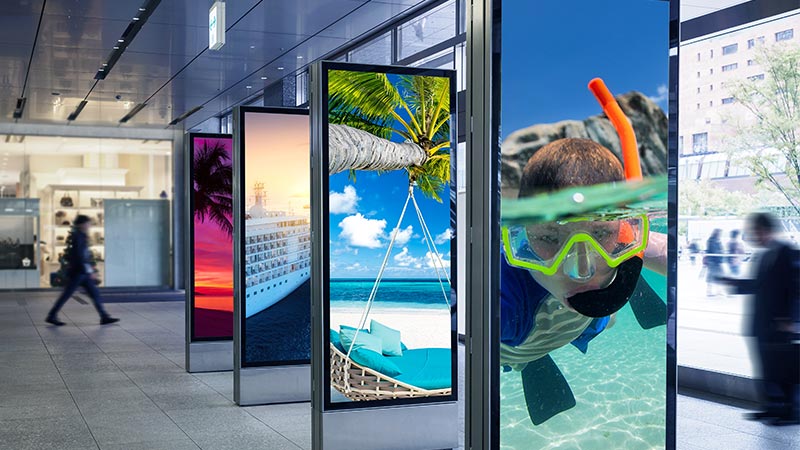Exactly How Digital Signs Providers Can Enhance Customer Interaction
In today's affordable landscape, companies are increasingly turning to electronic signage solutions as a method to raise consumer engagement. By integrating interactive material and real-time communication, these solutions provide a distinct possibility to catch consumer focus and foster significant interactions. As companies leverage cutting-edge approaches to develop immersive experiences, it comes to be necessary to explore the numerous advantages and prospective challenges of such implementations. What are the specific components that make digital signs not just a device, yet a transformative property in the client interaction journey?
Advantages of Digital Signage
Digital signs supplies a vibrant and reliable means for businesses to engage with their clients. Among the primary advantages is the capacity to supply real-time information, allowing businesses to update material instantly based upon existing promotions, occasions, or perhaps stock levels - San Jose custom signs. This immediacy boosts consumer experiences by giving pertinent and prompt information, which can drive sales and improve consumer satisfaction

Furthermore, electronic signage can be personalized for different areas and demographics, guaranteeing that the right message reaches the appropriate audience. This level of personalization can boost brand name loyalty as clients feel more linked to the service.
Cost-effectiveness is an additional notable advantage. While the preliminary financial investment may be more than traditional signs, the lasting financial savings on printing and setup, incorporated with the capacity for enhanced sales, often outweigh the costs. On the whole, electronic signs acts as a powerful device for boosting client interaction and driving organization success.
Interactive Content Strategies
Engaging clients exceeds simply presenting information; integrating interactive web content strategies can substantially enhance the effect of electronic signs. By integrating components such as touch displays, motion sensing units, and QR codes, organizations can develop immersive experiences that encourage consumer involvement. This interactivity not just astounds attention but likewise promotes a much deeper link with the brand.
One effective strategy is the use of gamification, where customers can participate in quizzes or difficulties associated to products or services. This technique not just captivates but additionally informs consumers, leading to educated getting decisions. Furthermore, integrating client responses mechanisms, such as satisfaction surveys displayed on digital signs, empowers consumers and offers useful insights for businesses.
One more effective strategy is customized content shipment. By using client information, organizations can customize messages and promos that resonate with specific preferences, making the experience a lot more appropriate and engaging. Including social media feeds permits consumers to see real-time communications and reviews, improving trust fund and neighborhood engagement.
Real-Time Communication Advantages
Efficient real-time interaction can change consumer engagement strategies, making it possible for businesses to react promptly to altering conditions and audience requirements. Via digital signage, organizations can share timely information that reverberates with their audience, boosting the total consumer experience.
Real-time updates enable companies to attend to promos, events, or emergencies quickly, making sure that clients are always informed. This level of responsiveness promotes count on and loyalty, as customers appreciate transparency and prompt information. For instance, merchants can upgrade promotions based on stock levels or specific customer demographics, tailoring messages to make the most of engagement and drive sales.
Additionally, real-time communication makes it possible for companies to keep track of target market reactions and change content dynamically. Making use of analytics and feedback devices embedded in electronic signage systems, organizations can assess client belief and adjust their messaging accordingly. This dexterity not just boosts involvement but likewise lines up marketing methods with real-time customer behavior.
In an era where customer expectations are constantly evolving, the ability to interact in actual time is no much longer a luxury however a requirement. Organizations that harness this advantage via digital signage are better placed to create purposeful links with their target market, inevitably bring about increased fulfillment and loyalty.
Case Researches of Effective Execution
Many services have actually effectively used the power of electronic signage to boost client engagement and drive outcomes. A notable example is Starbucks, which utilizes digital displays to promote seasonal offerings and commitment programs. By showcasing visually enticing material, the firm has reported raised consumer interaction and an uplift in sales throughout advertising durations.
Another compelling case is McDonald's, where digital signs has actually been incorporated right into both drive-thru and in-store environments. By utilizing vibrant menu boards that adjust in real-time based on aspects like time of day and inventory degrees, McDonald's has seen enhanced consumer decision-making speed and total satisfaction. This adaptability not just improves procedures however also improves the customer experience.

These study show that when strategically released, digital signs can dramatically improve client interaction, dressmaker messages to specific audiences, and eventually drive sales growth across important link numerous sectors. (San Jose custom signs)
Future Trends in Digital Signage
As we look in advance, the landscape of digital signage is positioned for transformative developments that will certainly even more improve client interaction. One of the most considerable fads is the integration of synthetic intelligence (AI) and equipment discovering. These modern technologies will certainly allow digital signs systems to analyze customer behavior in real-time, therefore providing personalized web content that resonates with specific preferences.
Additionally, the surge of interactive displays will empower consumers to engage actively with web content. Touchscreens and gesture-based interactions will certainly develop immersive experiences, encouraging much deeper links with brand names. Furthermore, the unification of enhanced reality (AR) will certainly offer customers one-of-a-kind and exciting experiences that mix the physical and digital worlds, improving their overall journey (San Jose custom signs).
One more encouraging fad is the enhanced emphasis on sustainability. As services come to be extra ecologically mindful, digital signage options that use energy-efficient displays and green materials will certainly obtain traction. The growth of cloud-based electronic signs platforms will certainly make sure smooth material management and updates, allowing organizations to respond quickly to market adjustments.
Final Thought
Digital signage services represent a transformative tool for enhancing customer interaction. By leveraging interactive content, real-time communication, and critical application, companies can produce immersive experiences that web link reverberate with target market. The assimilation of gamification and customer comments mechanisms better individualizes interactions, fostering deeper connections in between brands and consumers. As fads in digital signage remain to develop, the capacity for increased consumer commitment and contentment continues to be considerable, emphasizing the significance of adopting these ingenious services in modern marketing strategies.